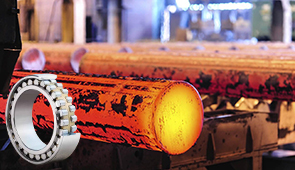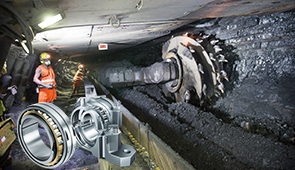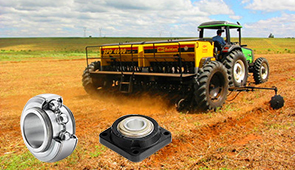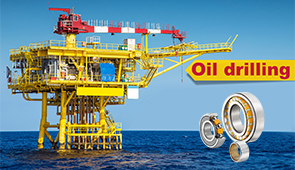Grease vs Oil: Understanding Lubricants for Bearing Lubrication
Bearings are at the heart of countless mechanical systems, ensuring smooth operations and reducing friction in critical machinery. However, their performance and longevity heavily depend on one pivotal factor—proper lubrication. When it comes to choosing the right lubricant for bearings, one of the fundamental decisions is whether to use grease or oil. Each option has distinct characteristics and is suited to specific applications, environmental conditions, and load requirements. This article dives into the technical nuances of grease and oil as lubricants, equipping you with the knowledge to make informed decisions tailored to your machinery’s needs. Whether you’re managing industrial equipment or keeping precision instruments running optimally, understanding the key differences between these two lubricants is critical for maximizing efficiency and reliability.
Introduction to Lubricants
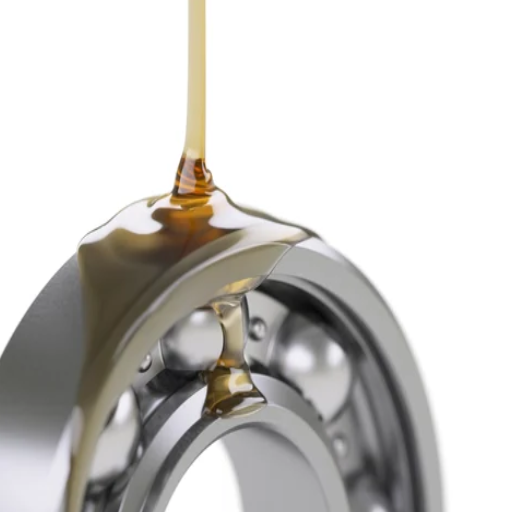
What are Lubricants?
Lubricants are substances designed to lessen the friction between moving mechanical surfaces. This is basically to minimize damage to equipment due to wear and tear, prevent overheating, and make sure machinery operates smoothly. A lubricant gives a protective film against direct metal-to-metal contact, which, without proper lubrication, would be highly detrimental.
Away from frictional aspects, lubricants undertake other crucial functions such as acting as a coolant by absorbing the heat generated by the working components of a machine. Also, they keep out contamination such as dust or moisture that could adversely affect the performance or life of the equipment. Lubricants are formulated, in most cases, with additives, which will impart to the base the required properties such as oxidation resistance, corrosion protection, and viscosity stability over a temperature range.
Lubricants get further classified into two general types: liquid lubricants (oils) and semi-solid lubricants (greases). Oil is used when the application demands the highest degree possible for heat dissipation and high speeds, while grease is used when the application demands a longer period of protection or under very high loads.
Other considerations in choosing the appropriate lubricant depend upon the design of the machine itself and the environment in which the machine is designed to operate. Actual therapy is based somewhat on idiosyncrasies related to the subject’s machinery. Hence, it behooves any lubricating engineer to have some basic knowledge of the above.
Importance of Lubrication in Machinery
Efficient and reliable machinery requires proper lubrication. Lubrication prevents friction between fast-moving parts, which reduces wear and tear, thereby increasing the lifespan of the components and their consistent functionality. Without proper lubrication, machinery parts are subjected to excessive mechanical stress, which consequently may result in premature failure and expensive downtime.
Apart from that, lubrication is an important factor during heat control generated during the operation of the equipment. Lubricants reduce friction and activate heat dissipation of excess heat, thereby stopping their contribution to overheating and their elevation of optimum operational temperatures. Such temperature control is critical for high-speed or heavy-load applications, as insufficient cooling may cause significant damage.
Finally, maintaining a contaminant barrier against any dirt, dust, or moisture constitutes one of the uses for lubrication. A contaminant may enter the machinery and degrade surfaces, cause corrosion, or obstruct the processes, lessening the efficiency and sometimes causing malfunctioning. Forming a seal by their presence, lubricants contribute to resisting direct exposure so proud of the resistance and reliability, which allows machinery that runs under the fortitude of large environmental differences without losing ability.
Overview of Grease and Oil
In machinery lubrication, grease and oil serve as the primary options to reduce friction and wear. Grease is a semi-solid substance made of base oil, thickener, and additives. It is meant to stay put under heavy loads and in places that are seldom re-lubricated. Grease has the adhesion properties to stay in place amid exposure to water and contamination while also making a tough protective barrier.
An oil, however, is a liquid lubricant that flows freely and is suited best where there is constant movement or high-speed operation. They mostly consist of base oils and additive packs to ensure that their viscosity, thermal stability, and oxidation resistance are all maintained. Oils shine at heat dissipation and building a thin, uniform film of lubricant in applications, such as engines, transmissions, and hydraulic systems.
Each one has its pros and cons, depending on the machinery’s requirements and the working conditions. Grease is usually preferred when the lubricant is required for durability and contamination resistance, such as in bearings or exposed mechanical elements. Oil comes into favor where heat dissipation, accuracy in application, and ease of lubrication take precedence. The choice of lubricant depends primarily on ambient temperature, loading, speed, and environmental exposure so that the equipment can operate efficiently, preventing breakage in the course of time.
Grease: Composition and Properties
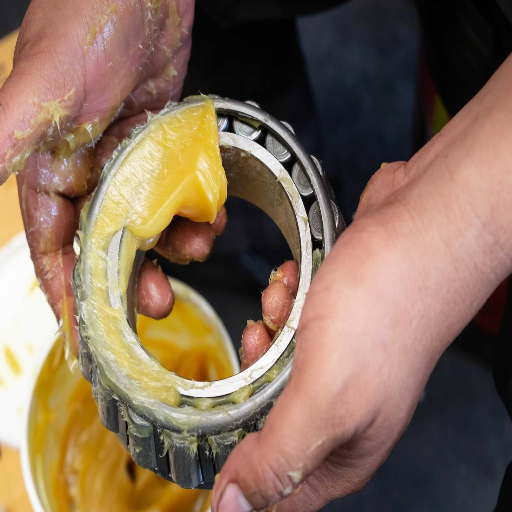
Base Oil and Thickening Agents
Grease is made of base oil, thickener, and additives, each factor contributing to its efficiency and application. Generally speaking, the base oil takes for 70 to 90% of the overall composition of the grease, which forms the primary lubricating properties of it. Base oils can be mineral, synthetic, or bio-based; of them, the synthetic oils are considered to have better thermal stability, oxidation resistance, and perform well in the presence of extreme pressures and temperatures.
The thickening agent, often called a soap or gelling agent, acts as the matrix to support the base oil. Common thickening agents consist of metallic soaps such as lithium, calcium, and aluminum complexes, or they may be non-soap thickeners such as polyurea or clay. Each type of thickener possesses specific properties; for example, lithium greases stand superior in water resistance and find application in a broad spectrum of situations, while the complex thickeners, calcium sulfonates included, provide good load-carrying capability and inhibit corrosion better.
Additives are formulated to enhance grease characteristics by furnishing antioxidant, anti-wear, and extreme-pressure properties to ensure that grease performance is maintained under demanding conditions. If one is to choose the correct grease for any application, it becomes of paramount importance to understand the synergy of the base oil, thickener, and additives with regard to lubrication life, mechanical protection, and resistance to environmental factors.
Types of Grease
It is an application-engineering-oriented classification of greases into thickener composition, base oil, and additive package. The most familiar grease types are:
- Lithium-Based Greases: Lithium greases have dominated the market because of high-temperature stability, water resistance, and lubricating properties, being thus applied all over industrial situations for general-purpose applications, including automotive wheel bearings and industrial machinery. To give even better performance, especially in high-temperature and high-load situations, lithium complex greases are used.
- Calcium-Based Greases: Calcium greases provide excellent water resistance and good corrosion protection and are thus used mostly in marine service or any application where high moisture is present. These, however, cannot be applied at high temperatures because their thermal stability is quite a bit less compared to other grease types and, therefore, find applications only at low and intermediate service temperatures.
- Polyurea Greases: Polyurea greases are characterized by an exceptionally long service life and can withstand high temperatures. These greases are used mostly in sealed-for-life types of bearings, owing to their excellent oxidation stability, and then they find application in electric motors and industrial situations where very little maintenance is warranted.
- Aluminum Complex Greases: They combine enhanced extreme-pressure and anti-corrosion properties, with their uses limited to some demanding applications such as food processing equipment, where resistance to water washout is very important, coupled with compatibility with food-grade requirements.
- Synthetic Greases: These types of greases, prepared from synthetic base oils, have astounding performances in extreme temperature ranges, whether it may be an arctic environment or high temperatures of an industrial nature. They ensure good oxidation stability, very low friction, and a longer lubrication interval, suitable for aerospace, automotive, and heavy machinery.
- Clay-Based (Non-Soap) Greases: Using inorganic thickeners, say bentonite or other clays, these greases offer great thermal stability, retaining their consistency even at elevated temperatures. These greases are frequently utilized in circumstances where the soap-based grease would fail from thermal stress.
In selecting the grease, the operational environment must be taken into account: operational temperature range, operational load conditions, and contamination, i.e., entry of water, dust, or chemicals. Each grease has its characteristics, and matching these to the working environment conditions will ensure reliability and a greater life span of the mechanical equipment.
Applications of Grease
- Automotive Industry: Grease from the automotive industry is used to lubricate essential parts such as wheel bearings, chassis joints, and universal joints. For instance, lithium grease finds common application because of its good performance over a wide temperature range (-20°F to 300°F) and its water resistance characteristic, prolonging the life of automotive parts.
- Industrial Machinery: Heavy industrial equipment, such as conveyors, gearboxes, and compressors, usually operates with high mechanical stress and temperatures. In such environments, one would prefer calcium sulfonate grease for its well-developed load-carrying capacity and resistance to washing out, with the latter attribute being of prime need as is carried out in machines.
- Aerospace Applications: Aerospace systems require greases that will withstand extreme conditions: low temperatures, vacuum temperatures, etc. Engines, pumps, and actuators in aircraft systems generally use synthetic fluorinated grease that remains stable up to temperatures of 500°F and is resistant to oxidation, necessary to ensure the reliability of grease operations.
- Marine Equipment: The marine environment demands greases that are highly water- and corrosion-resistant. Aluminum complex grease, suited to conditions of high humidity and saltwater spray, finds its applications all over ship deck machinery, cranes, and rudder systems to keep components free of rust and wear.
- Food Processing Machinery: Food-grade greases, usually NSF-certified, are designed to be non-toxic and safe and should be used for incidental food contact. Usually prepared from Polyalphaolefin(PAO) or White Oils, these greases ensure the highest hygiene standards while still protecting mixers, conveyors, and food packaging lines used in food production.
Oil: Composition and Characteristics

Base Oil Types
Being the fundamental ingredients of lubricants, base oils impart their physical properties and lay claim to one or other characteristics considered desirable for a particular application. Base oils may be grouped as:
- Mineral Oils: These are solvent-refined oils prepared by simpler refining techniques. Group I base oils contain more impurities like sulfur and unsaturated hydrocarbons. They are thermally less stable but cost less and are fairly used in general-purpose lubricants.
- Hydrotreated Mineral Oils: These base oils have undergone hydrocracking and hence are purer and stable compared to Group I base oils. They have increased oxidation resistance, higher viscosity indices, and lower sulfur content, thus making them preferable for modern automotive lubricants.
- Highly Refined Mineral Oils: Being mineral oils, they are subjected to more advanced hydroprocessing techniques to give them a high viscosity index and better thermal stability. Due to the higher quality of Group III oils, they are sometimes categorized as synthetic, considering them for long-life and high-performance applications.
- Polyalphaolefins (PAO): It is a fully synthetically produced base oil with tailor-made molecules providing excellent thermal stability, low volatility, and high lubricity. These oils are used in high-stress environments such as industrial equipment and automotive systems exposed to extreme temperature conditions.
- Non-Conventional Base Oils: This group comprises base oils not properly accommodated by the earlier categories, such as esters, polyalkylene glycols (PAGs), and silicones. These oils are developed for very specific applications and, thus, provide features such as biodegradability, water solubility, or enhanced lubricity under extreme conditions.
The selection of the base oil has a significant influence on the additive package, viscosity, and the ultimate performance of the lubricant. Progress in refining and chemical engineering is continually narrowing the gap between mineral oils and synthetic oils, thus giving highly specialized solutions to end users that can be matched to the requirements of modern machinery and operational environment.
Oil Used in Different Applications
The choice of oil differs quite a bit according to the needs of a particular application, considering operational conditions, load requirements, and environmental restrictions. In the case of industrial machines, hydraulic oils are normally used because of their resistance to high pressures and thermal stability. These oils may contain antiwear additives to minimize friction among moving parts, thereby ensuring that machinery lasts and performs consistently even under heavy loads.
Engine oils, on the other hand, should maximize engine performance and efficiency while minimizing wear and emissions. Modern oils are frequently referred to by viscosity grades, such as SAE 5W-30 or SAE 10W-40, and must meet severe performance requirements, such as API SN or ACEA C3, which are tested on high-performance engines.
Moreover, which includes food-grade equipment, requires the use of NSF H1-certified lubricants that protect against contamination while maintaining superior oxidation resistance. These oils comply with stringent regulatory guidelines that contribute to the protection of public health.
Following the explosion of synthetic oils, their use has been applied to more specific applications. For instance, PAO-based lubricants are famous for excellent thermal properties and low volatilities, being the first choice for varying-temperature environments. Esters and phosphate esters are the lubricants of choice for aviation hydraulic systems and fire-retardant applications due to their superior thermal stability and non-flammability. This makes it evident the necessity for specific oil formulations towards operational efficiency and safety in various industrial sectors.
Advantages of Using Oil
- Thermal Stability: Oils can endure temperature extremes, with synthetic oils even more so; therefore, they maintain performance under high-temperature conditions. Studies reveal that synthetic oils operate well at temperatures over 400°F (204°C), which becomes imperative in systems like engines and turbines.
- Lubrication Efficiency: Oils reduce friction between moving parts, hence preventing wear and allowing greater service life for machinery. It has been recorded from research that high-quality lubricants can assist in halving friction, thereby aiding in energy savings and minimizing operating expenses.
- Corrosion Protection: Most oils in their purest form or with a variety of additives provide a thin layer of protective film that prevents moisture from rusting or causing corrosion to any metal part. Such anti-corrosion oils are used extensively in the automotive and marine industries to maintain system integrity under harsh conditions.
- Energy Transfer Capability: Hydraulic oils are used to transmit power very efficiently. The oils have been formulated with flow characteristics and pressure stability to render industrial applications in which precision and reliability are required.
- Contaminant Suspension: Dispersant oils suspend contaminants and particles, thus inhibiting sludge and deposit buildup. This keeps internal systems clean, which reduces maintenance and increases productivity.
Grease vs Oil: Key Differences
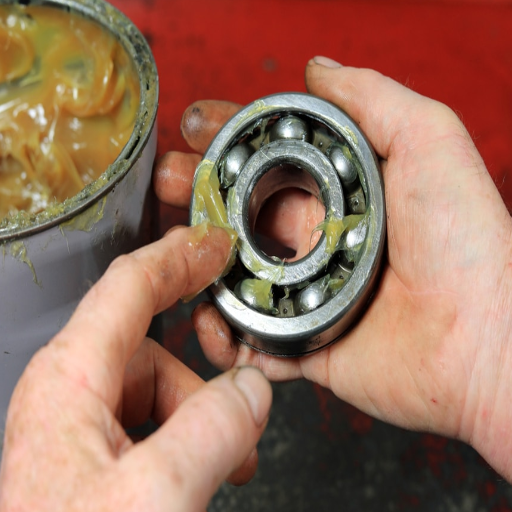
Consistency and Texture
The main distinction between grease and oil is the difference in consistency and texture, which directly affects their application. Oil is a fluid lubricant used in systems wherein continuous lubrication is provided, such as engines, hydraulics, or gearboxes. This fluidity with low viscosity allows it to flow freely by separating moving surfaces to reduce friction and also heat. Grease is a semi-solid substance, more often prepared by mixing an oil with a thickener, such as lithium- or calcium-based soaps. The semi-solid characteristic of the grease enables it to stick to the surface better than oil does, making it suitable for situations where long-term lubrication is required without frequent reapplication and maintenance.
Another advantage of grease lies in its texture when used in harsh environments. Grease is commonly applied in heavy machinery, bearings, and high-load applications where it needs to stay in place under high pressure and hostile environments. The importance of such grease applications in structural or mining ventures cannot be overestimated in actually maintaining equipment standards, as it stands against washing away by water, dust, and dirt. Thin oil-like grease, on the other hand, is preferred in systems where the continuous flow would take contaminants away from friction points and distribute heat, being particularly necessary in engines and turbines at very high speeds.
Whilst recent and new developments in lubricants have resulted in specialty greases and oils engineered to suit particular industrial applications, synthetic oils, for example, are designed with better thermo stability and can ensure their best performance at extreme temperatures. Likewise, the other high-grade greases now carry an advantage of having additives of molybdenum disulfide for best wear protection under heavy loads. With this knowledge, professionals can choose according to operational needs, environment, and specification of equipment, thereby increasing effective work life and reducing alteration costs.
Lubrication Duration and Performance
Lubricants’ duration and performance depend on several important factors, including the base oil type, viscosity, additives, operating temperature, and environmental conditions. Synthetic lubricants, for example, have a longer life than their commercial mineral-based counterparts due to their higher thermal and oxidative stability. Well-chosen greases can retain their protective properties for prolonged periods of time, thus reducing maintenance intervals and subsequent downtime for operations.
Evidence shows that under the same operating conditions, high-performance synthetic lubricants may extend lubrication intervals by as much as 50% compared with conventional oils. The use of high-tech additives, such as anti-wear agents and corrosion inhibitors, further enhances durability by reducing inside wear, oxidation, and contaminant build-up. For instance, in grease, molybdenum disulfide imparts a remarkable load-carrying ability that is crucial for high-pressure applications.
When defining safe lubrication intervals and expected performance, the operator must consider the peculiarities of the application against the specifications of the lubricant and make compromises from either side. For example, the consideration of such as machinery load profile, rotation speed, ambient conditions, and contaminant presence is key. Employing predictive maintenance practices such as oil analysis also reveals the lubricant’s performance standing and facilitates timely corrective actions to avoid premature equipment wear. When properly implemented, such measures yield better operational reliability and reduced maintenance costs.
High-Temperature Applications
Instances of high-temperature applications are generally recognized as working environments where the thermal environment exceeds the accepted standards of the equipment and material. Usually, these conditions occur above the temperature of 250°F (121°C). Such environments exist chiefly in the manufacturing, power-generating, and aerospace industries. A high-temperature condition must be well analyzed and managed to maximize efficiency in service and the life of the equipment itself.
Materials selection is crucial in high-temperature environments. Components must inherently possess very high thermal stability, oxidation resistance, and adequate structural strength when exposed continuously to high temperatures. For example, such alloys as Inconel and stainless steel are often used for their properties to resist creep at high temperatures and thermal stresses so generated, while ceramics and advanced composites, along with metals, aid in lending further strength and stability where needed.
Under such scenes, lubrication requires a very special treatment as common lubricants quickly degrade in thermal assault. Synthetic lubricants with high thermal resistance, in many cases based on polyol ester, silicone, or perfluoropolyether (PFPE) chemistry, are thus imperative in securing satisfactory performance. These formulations combat thermal breakdown-ignited vaporization, thus prolonging maintenance intervals and reducing wear risk.
Thermal management systems also improve the high-temperature performance of a system through heat dissipation and insulation. Other technologies, such as thermal barriers and refractory coatings, as well as active cooling, ensure that temperatures are well controlled. Furthermore, continuous monitoring, either by use of an infrared thermography system or in-line sensors, provides real-time data and can direct remedial action before any critical failure.
Choosing the Right Lubricant
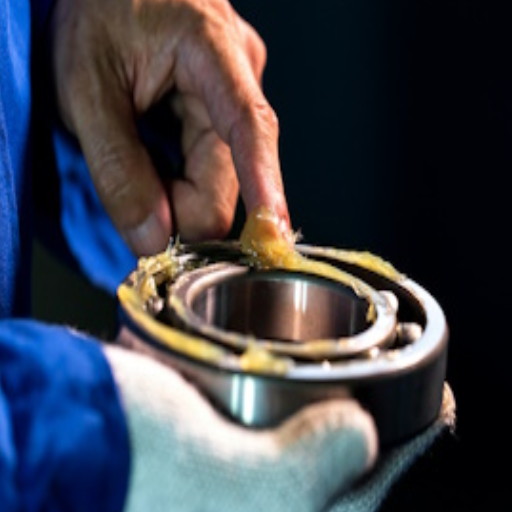
Factors to Consider in Bearing Lubrication
The first step to decrementing bearing lubrication is always a proper evaluation of the operating conditions, which include the temperature range, speed, and load capacities expected during bearing operation. Generally, high-speed applications repel high-viscosity lubricants that tend to increase frictional heat, while heavy-load applications attract high-viscosity lubricants so that the lubricating film is sufficient. If these critical alignments of lubricant properties to system demands are lost, wear, overheating, and inefficient operation will most likely be expected.
One must then consider the environment the bearings will be exposed to. Contaminants such as dust, moisture, or chemicals could deteriorate the lubrication capacity and damage the bearing surfaces. In such cases, I either recommend sealed bearings or lubricants with additives that resist contaminants or remedy the presence of water. Synthetic lubricants are usually much better in extreme conditions due to their superior thermal stability and chemical resilience. Ensuring lubricant-seal material compatibility is equally vital under such conditions to avoid the degradation of system integrity.
Last but not least, maintenance duration also contributes to decision-making. For example, grease can give longer durations between reapplications because of its stability and adhesion, thus making it suitable for outer-directional components that are difficult to access. Whereas Oil can be used as a temperature controlling and dynamic adjustment medium with an appropriate filtration system, but requires frequent monitoring. Taking these into consideration, I can make informed decisions relevant to the bearing lifetime, efficiency, and overall system reliability.
When to Use Grease vs Oil
The choice between grease and oil is dictated by the operating parameters and environmental conditions. Grease is applied where re-lubrication is infrequent or impossible; examples include sealed mechanisms and other things hard to single out. Being semi-solid, grease stays put to ensure that a coating of lubricant is maintained on the bearing surface, even running in a vertical or irregular orientation. Some typical applications include bearings of electric motors, industrial gear assemblies, and equipment subjected to contamination or vibration, against which grease prevents the ingress of dust and moisture.
Oil, on the other hand, is selected for continuous lubrication and heat dissipation systems and, hence, high-speed rotary systems like turbine bearings and automobile engines. Given its viscosity and fluidity, oil will circulate well within a complex component to cool it and stop friction. Oil systems can also be enhanced by filtration and recirculation methods, increasing their capacity to handle contaminants while performing at full efficiency.
Understanding the trade-offs between grease on one side, being stable for longer periods, and on the other side, oil being dynamically adaptable, results in lubrication practices that suit any requirement of the application, hence elongating machinery life and efficiency.
Impact of Additives and Formulation
Lubricant properties are highly influenced by the additives they contain and by the sophistication of their formulations. Additives are chemical ingredients used to improve the desirable properties of base oils or impart properties needed in the field, given operational problems. Anti-wear additives such as ZDDP (zinc dialkyldithiophosphate), for example, build a protective film on metal surfaces and reduce wear of contacts under severe conditions of pressure. They are also detergents and dispersants that empty deposits and sludge by irritating acidic by-products.
Advanced formulations use viscosity modifiers to keep lubrication constant over a wide temperature range, thus meeting the demands of high-performance machines. Friction modifiers, on the other hand, maximize energy efficiency by reducing drag resistance in the system. Modern additive packages thus include inhibitors of corrosion against which a component is erected in the presence of moisture or oxidative conditions.
Additives and base oils are combined in a manner adapted to the specific needs of applications ranging from automotive engines to industrial gearboxes. Further progress in additive chemistry is the mother of lubricants with improved biocompatibility from the standpoint of operational efficiency as well as sustainability.
Frequently Asked Questions (FAQ)
Q: What is the difference between grease and oil?
A: The difference between grease and oil lies primarily in their composition and application. Grease consists of a base oil mixed with a thickener, which gives it a semi-solid texture, making it ideal for applications where a lubricant is needed to stay in place, such as in bearings or joints. Oil, on the other hand, is a fluid lubricant that provides excellent coverage and is often used in oil-lubricated systems.
Q: When should I use grease vs oil?
A: Whether to use grease or oil depends on the application. Grease is preferred in situations where the lubricant needs to stay in place despite movement, such as on a shaft or in a sealed bearing. Oil is more suitable for applications requiring fluid motion and cooling, where oil lubricants can circulate freely to reduce friction.
Q: What are oil lubricants, and how do they differ from grease?
A: Oil lubricants are liquid substances designed to reduce friction between surfaces in motion, while grease is a thicker lubricant that combines oil with a thickener. Oils typically have lower viscosity compared to grease, allowing them to flow easily and cover larger areas, whereas grease helps to seal out harmful contaminants and maintain lubrication over time.
Q: Can I mix oil and grease?
A: Mixing oil and grease is generally not recommended unless specified by the manufacturer. When grease is mixed with oil, it can alter the grease’s properties and reduce its effectiveness. It’s essential to ensure compatibility between the two lubricants to avoid issues such as leaks or reduced lubrication performance.
Q: What is synthetic grease, and how does it compare to petroleum-based grease?
A: Synthetic grease is made from synthetic base oils and additives, offering superior performance in extreme temperatures and conditions compared to petroleum-based grease. It often has a higher tolerance for pressure and can provide an extended service life, making it a preferred choice in high-performance applications.
Q: How does grease help prevent rust?
A: Grease helps prevent rust by creating a barrier that seals out moisture and harmful contaminants. This barrier is particularly important in environments where metal components are exposed to water or humidity. Grease volume can be adjusted to ensure adequate protection without causing leaks.
Q: What are solid additives in grease, and why are they important?
A: Solid additives, like graphite, are often included in grease formulations to enhance their performance under high-load conditions. These additives improve the grease’s ability to withstand pressure, reduce friction, and extend the life of lubricated components, making them particularly valuable in heavy-duty applications.
Q: How does base oil viscosity affect lubrication?
A: Base oil viscosity plays a crucial role in lubrication effectiveness. Higher viscosity oils provide better film strength and protection under heavy loads, while lower viscosity oils flow more easily, making them ideal for oil-lubricated systems. The right viscosity ensures proper lubrication and reduces wear on moving parts.
Q: What should I consider when choosing between oil and grease for my application?
A: When choosing between oil and grease, consider factors such as the operating environment, load conditions, temperature range, and the presence of contaminants. Grease is often better for sealing applications and preventing leaks, while oil is more suitable for cooling and maintaining fluid motion in systems.
UCTH213-40J-300 with Setscrew(inch)
CNSORDERNO: Normal-duty(2)
TOGN: UCTH213-40J-300
SDI: B-R1/8
SD: 2 1/2
UCTH212-39J-300 with Setscrew(inch)
CNSORDERNO: Normal-duty(2)
TOGN: UCTH212-39J-300
SDI: B-R1/8
SD: 2 7/16
UCTH212-38J-300 with Setscrew(inch)
CNSORDERNO: Normal-duty(2)
TOGN: UCTH212-38J-300
SDI: B-R1/8
SD: 2 3/8
UCTH212-36J-300 with Setscrew(inch)
CNSORDERNO: Normal-duty(2)
TOGN: UCTH212-36J-300
SDI: B-R1/8
SD: 2 1/4
UCTH211-35J-300 with Setscrew(inch)
CNSORDERNO: Normal-duty(2)
TOGN: UCTH211-35J-300
SDI: B-R1/8
SD: 2 3/16
UCTH211-34J-300 with Setscrew(inch)
CNSORDERNO: Normal-duty(2)
TOGN: UCTH211-34J-300
SDI: B-R1/8
SD: 2 1/8












